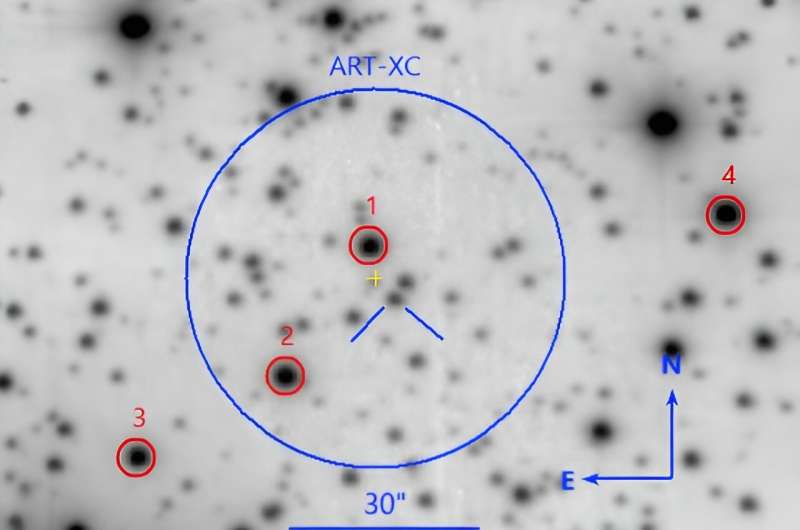January 22, 2024 report
This article has been reviewed according to Science X's editorial process and policies. Editors have highlighted the following attributes while ensuring the content's credibility:
fact-checked
preprint
trusted source
proofread
Astronomers investigate the properties of a peculiar cataclysmic variable

Astronomers from Turkey and Russia have performed optical observations of a magnetic cataclysmic variable known as SRGA J213151.5+491400. Results of the observational campaign, presented Jan. 11 on the pre-print server arXiv, yield important insights into the properties of this peculiar system.
Cataclysmic variables (CVs) are binary star systems consisting of a white dwarf primary that is accreting matter from a normal star companion. They irregularly increase in brightness by a large factor, then drop back down to a quiescent state. These binaries have been found in many environments, such as the center of the Milky Way galaxy, the solar neighborhood, and within open and globular clusters.
Polars are a subclass of cataclysmic variables distinguished from other CVs by the presence of a very strong magnetic field in their white dwarfs. One of them is SRGA J213151.5+491400, which was first identified in 2020 as an X-ray source, when it experienced a prominent flare.
A team of astronomers led by Solen Balman of the Istanbul University, Turkey, began to observe SRGA J213151.5+491400 in the optical wavelengths, shortly after its flaring activity started. For this purpose, they used the TÜBITAK National Observatory in Turkey and the Special Astrophysical Observatory (SAO) in Russia.
"In order to identify and study the source we used observations with the optical telescopes at TUG (TÜBITAK National Observatory, Turkey)—mainly RTT150 1.5m telescope and at the SAO RAS (Special Astrophysical Observatory, Russian Academy of Sciences)—mainly 6m telescope (BTA)," the researchers wrote.
Observations conducted by Balman's team show that SRGA J213151.5+491400 changed to a low state at the beginning of 2021 from the high state in 2020 with a decrease of 3.0 mag in brightness. The spin pulse profile of the source was found to be single peaked (mostly sinusoidal) in the high state, while during the low state a double-peaked profile was seen, indicating a two-pole accretor.
The astronomers underlined that change of accretion geometry and pole-switching from one to two-pole accretion within or across states is detected in several polar magnetic cataclysmic variables.
Based on the collected data, the spin period of the white dwarf in SRGA J213151.5+491400 was measured to be approximately 85.98 minutes. This is one of the shortest spin periods obtained for polar-type systems.
Low-resolution spectroscopy performed by the researchers revealed prominent Balmer lines and a helium line. It was noted that the Doppler tomography using these spectral lines confirmed the polar nature of this system.
The authors of the paper added that additional observations of SRGA J213151.5+491400 in X-rays, using the Neutron Star Interior Composition ExploreR (NICER) identified the soft X-ray component in the low state. Therefore, this is the first detection of a soft component in the low state of a polar.
More information: Ş. Balman et al, Optical identification and follow-up observations of SRGA J213151.5+491400—a new magnetic cataclysmic variable discovered with SRG Observatory, arXiv (2024). DOI: 10.48550/arxiv.2401.06001
Journal information: arXiv
© 2024 Science X Network





















